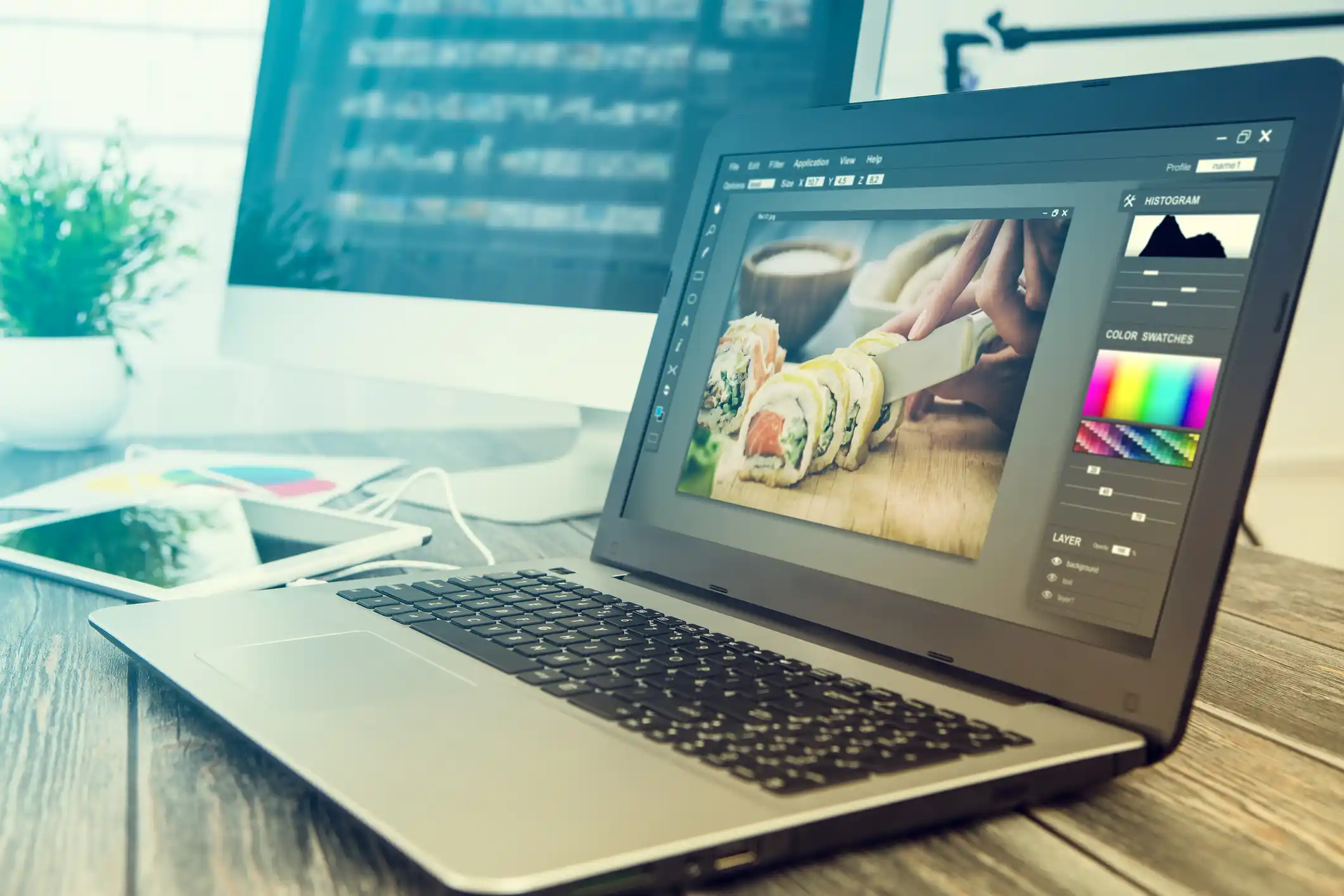How to choose a Laptop for Graphics work
A comprehensive guide by Yash Sharma on selecting the perfect laptop for graphic design, video editing, 3D modeling, and other creative professional work.

By Yash Sharma
Tech Expert • 8 years experience
Why choosing the right Graphics laptop matters
As a professional who has tested hundreds of laptops over the past 8 years, I can tell you that selecting the right machine for graphics work is crucial for your productivity and creative success. The wrong choice can lead to frustrating render times, application crashes, and ultimately, missed deadlines.
Graphics-intensive work demands specific hardware configurations that differ significantly from regular computing needs. Whether you're a freelance graphic designer working on brand identities, a video editor creating cinematic content, or a 3D artist modeling complex scenes, your laptop is your primary tool for creative expression.
Performance
Handle demanding applications smoothly
Color accuracy
Professional-grade display quality
Reliability
Consistent performance under load
Yash's Pro Tip:
"Don't compromise on RAM and graphics card quality. These two components will make the biggest difference in your daily workflow efficiency. I've seen too many designers struggle with 8GB RAM laptops when they really needed 16GB minimum."
Essential specifications for Graphics laptops
The technical requirements that actually matter for creative work
Graphics Processing Unit (GPU)
The heart of any graphics workstation. Dedicated graphics cards are essential for professional work.
- Minimum: NVIDIA GTX 1650 / RTX 3050
- recommended: NVIDIA RTX 4060 / RTX 4070
- Professional: NVIDIA RTX 4080 / RTX 4090
- Budget Alternative: AMD Radeon RX 6600M
Random Access Memory (RAM)
Sufficient RAM prevents application crashes and enables smooth multitasking with large files.
- Minimum: 16GB DDR4/DDR5
- Recommended: 32GB DDR5
- Professional: 64GB DDR5
- Speed: 3200MHz or higher preferred
Central Processing unit (CPU)
Multi-core processors handle complex calculations and rendering tasks efficiently.
- Intel: Core i7-12700H or newer
- AMD: Ryzen 7 6800H or newer
- Cores: Minimum 8 cores, 16 threads
- Clock Speed: 3.0GHz base minimum
Display specifications
Color-accurate displays are crucial for professional graphics work and client presentations.
- Size: 15.6" - 17.3" preferred
- Resolution: 4K UHD or QHD minimum
- Color Gamut: 100% sRGB, Adobe RGB preferred
- Panel Type: IPS or OLED for accuracy
Yash's top Laptop recommendations by Budget
Carefully selected options based on real-world testing and user feedback
Budget Range: ₹80,000 - ₹1,20,000
Entry-level Graphics laptops
Perfect for students and freelancers starting their creative journey.
- • Acer Aspire 7 with RTX 3050
- • ASUS VivoBook Pro 15 OLED
- • HP Pavilion Gaming 15
- • Lenovo IdeaPad Gaming 3
Budget Range: ₹1,20,000 - ₹2,00,000
Most PopularProfessional workstations
The sweet spot for most professional designers and content creators.
- • MSI Creator 15 with RTX 4060
- • ASUS ProArt StudioBook 16
- • Dell XPS 15 with RTX 4050
- • MacBook Pro 14" M3 Pro
Budget Range: ₹2,00,000+
Premium powerhouses
Ultimate performance for demanding professional workflows.
- • ASUS ROG Strix SCAR 17
- • MSI Creator Z17 HX Studio
- • Alienware x17 R2
- • MacBook Pro 16" M3 Max
Software considerations & compatibility
Different applications have varying hardware requirements. Understanding which software you'll primarily use helps narrow down the perfect laptop specifications.
Adobe Creative Suite optimization:
- Photoshop benefits most from high-frequency CPU and fast storage
- Premiere Pro requires powerful GPU and abundant RAM
- After Effects needs both strong CPU and GPU performance
- Illustrator is surprisingly light on hardware requirements
3D Software requirements:
- Blender favors powerful GPUs with CUDA/OpenCL support
- Maya and 3ds Max benefit from workstation-class graphics
- Cinema 4D optimized for multi-core CPU performance
- KeyShot requires RT cores for realistic rendering
Operating system choice:
Windows offers the broadest software compatibility and hardware options. macOS provides excellent color management and optimized creative workflows. Linux is budget-friendly but has limited professional software support.